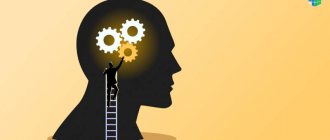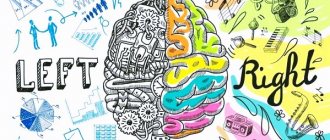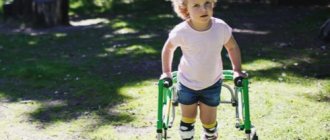Jean William Fritz Piaget is a psychologist, an outstanding Swiss research scientist, Doctor of Philosophy, born in August 1896 in the Swiss city of Neuchâtel, who became famous for his work on the study of the psychology of children and the creation of a theory of cognitive development. He founded the Geneva School of Genetic Psychology, and later developed his approach into the science of the nature of knowledge - genetic epistemology. Jean Piaget: mental development of the child.
Jean Piaget: a short biography
At the age of 11, Jean published his first work on rare birds - albino sparrows. Subsequently, continuing his studies, he rapidly built a scientific career - before he was even 20 years old, he was already considered an excellent scientist studying mollusks.
In 1918, Piaget defended his dissertation in natural sciences and received a PhD from the Neuchâtel Institute, and he also studied for some time at the Zurich Institute. During his studies, the scientist wrote two works on philosophy, but later he rejected them, as he believed that these were just the thoughts of a teenager. Even at this time, he began to get involved in psychoanalysis; at that time it was a fairly popular direction of psychological thought.
After Piaget received his degree, he moved from Switzerland to Paris, where he taught at a boys' school whose director was Alfred Binet, the creator of the test. While helping process IQ test results, Jean discovered that young children often answered some questions incorrectly. However, he focused not so much on the wrong answers, but on the fact that children make the same mistakes that are not typical for older people.
This observation led Jean to theorize that the thoughts and cognitive processes of children are very different from those of adults. He went on to create a general theory of developmental stages, which posits that people who are at the same stage of their own development exhibit similar general forms of cognitive ability.
In 1921, Piaget returned to Switzerland again and became director of the Rousseau Institute in Geneva.
In 1955, Jean Piaget headed the International Center for Genetic Epistemology as part of the Geneva Institute, which was created on the initiative of the famous scientist. Piaget remained in the leadership position of the center until the end of his life.
Analyzing the path of Jean Piaget in science, followers of the Geneva school of genetic psychology, founded by him, collectively argue that the scientist revolutionized fundamental research in the psychology of children, filling a previously little-studied volume with theory, and formed the basis for experimental research for several generations to come.
Throughout his life, he published more than sixty books and hundreds of scientific articles. Topics of his research:
- child's speech and thinking;
- psychology of intelligence;
- experimental psychology;
- child's moral judgments;
- genetic epistemology;
- the child's judgments and reasoning;
- selected psychological works.
J. Piaget's theory of mental development: basic concepts
Jean Piaget: mental development of the child, basic concepts.
The diagram is the source material for the development of a child’s intellect. This concept describes both mental and physical actions that are associated with understanding and knowing the world around us.
Assimilation is the introduction of new information into pre-existing patterns.
This process is a bit subjective, because we are trying to slightly change new experiences or acquired information in order to fit it into already formed beliefs.
Accommodation is the transformation of a pattern of actions.
Accommodation involves the very transformation of already existing patterns or ideas as a result of the emergence of new information or new impressions. During this process, completely new designs can be developed.
Balancing - finding a balance between assimilation and accommodation.
Intelligence is a mechanism of adaptation to the surrounding reality.
Centering is the concentration of the child’s consciousness on one side of the situation.
Egocentric speech is speech that does not take into account the position of the interlocutor.
How is children's thinking related to speech?
There is a direct relationship between a child’s thinking and speech. In order to learn to operate with words, sentences and abstract concepts, it is necessary to master speech. The faster and more actively speech develops, the better the quality of thinking develops. Feedback also takes place: the better developed thinking, the more coherent, logically structured and correct speech.
Stages of child intelligence development according to Piaget
Stages of child intelligence development according to Piaget from 0 to 2 years
Sensorimotor stage (0-2 years)
This stage of baby development involves understanding the world around us through actions, for example: looking at, grasping, biting, sucking, etc. Also during this period, progress in the development of innate reflexes is observed. At this stage, young children repeat events by experimenting with their bodies, for example: by hitting a toy they create noise, throw toys away, etc.
Centering
Centering is the act of focusing all attention on one characteristic or dimension of a situation while ignoring all others. Conservation is the realization that changing the appearance of a substance does not change its basic properties. Children at this stage do not know about conservation and exhibition concentration. Both centering and conservation can be more easily understood by experiencing the hypothesis in practice. And you can do this by simply watching your children after reading this article.
Features of the development of a child’s thinking according to J. Piaget
Difficulty realizing
This feature lies in the fact that a child (up to 11-12 years old) cannot say how he came to this or that mental conclusion.
Incapacity for logic
It is the inability to understand the relativity of point of view. Overcoming the inability to logic relationships occurs as follows: at first the child has only his own point of view, then he accepts the point of view of others (from 7 to 8 years), then he can accept the “point of view” of objects (that is, put himself in the place of the object and in this perspective talk about relationships between objects).
Inability to synthesize
The inability to synthesize is expressed in the absence of the concept of part to whole. The use of juxtaposition and inability to synthesize do not at all mean incoherence. These phenomena are accompanied by a feeling of static or dynamic connection, the explanation of which is given to us by the analysis of syncretism.
Syncretism
Syncretism is the direct fusion of heterogeneous elements, as well as the belief in the objective connection of the elements thus condensed.
Syncretism is the opposite of juxtaposition. This is an excessive number of connections between objects, inadequate communication.
Precausality
This is the inability to establish cause-and-effect relationships. A characteristic feature of precausality is the inability to distinguish between physical causation and logical justification. During this period, the world is understood as a set of actions and intentions that are ordered and do not make room for random, inexplicable events.
Narrow field of observation
This feature of children's logic is a consequence of juxtaposition. Sometimes children notice much more things than adults, for example, they see a lot of details. However, due to the inability to establish relationships between objects, the child is unable to think about more than one thing at a time.
Transduction
The main feature of transduction is the absence of logical necessity.
In their reasoning, children operate with isolated cases, without achieving logical necessity, i.e. transduction, this is due to the fact that they do not yet need objective evidence of their correctness.
Insensitivity to contradiction
Jean Piaget: mental development of the child. The thoughts of a child aged 7-8 years are full of contradictory facts. It seems that the child is not sensitive to these contradictions and simply does not notice them.
These contradictions are divided into two types:
The first type is the “forgetfulness” contradiction. On one topic, a child has two contradictory opinions, between which he hesitates. Therefore, if a child is asked, he confirms one thing, and after a while he forgets and gives a completely different answer.
The second type is contradiction through the condensation of sensation: due to the impossibility of making a decision in favor of one of the contradictory judgments, children merge them into one or accept two at the same time.
Intellectual realism
Jean Piaget: mental development of the child. This is an inability for visual realism, that is, for objective perception.
The reality presented by the child is perceived together with objective reality. He lives alternately in each reality, and for some time forgets about the existence of others. He sees things as he imagined them. This is very well expressed in the first children's drawings.
For the egocentric thought of a child, intellectual realism is the most natural idea of the world. This indicates the impossibility of objective observation.
All these features of children's thinking, according to Piaget, have one common feature, which also internally depends on egocentrism. It consists in the fact that a child under 7-8 years old does not know how to perform logical operations of addition and multiplication.
My recommendations for parents
- When building a child’s development plan, pay attention to his age and work in accordance with it. For example, there is no point in teaching a two-year-old to read: he is not able to perceive symbols, but is ready to work only with specific examples.
- At each stage of development, it is worth presenting the child with as wide a range of age-appropriate activities as possible. For the baby - different sorters, pyramids, large insert puzzles, so that he can fully practice his trial and error technique. You can choose more complex toys of this type for a preschooler, and also help him overcome egocentrism by demonstrating different points of view. For younger schoolchildren, logic puzzles that involve concrete, familiar subjects and objects are perfect, and for teenagers, problems of an abstract and theoretical nature.
- If you have speech difficulties, try to develop thinking with the help of different games, toys, exercises and age-appropriate techniques. If there is a suspicion that the child does not think well enough for his stage of development, then it is worth trying to influence cognitive processes through speech: ask mental problems in accordance with age, offer to look for the causes and consequences of various phenomena, classify, imagine the probable outcomes of a particular event .
Egocentrism and decentration according to Piaget
Jean Piaget: mental development of the child. Thanks to the clinical method, Piaget established that egocentrism is a peculiarity of children's logic, children's ideas and children's speech. At some stages, the child views objects as he sees them, without seeing their internal relationships. The sun follows him. Piaget called this realism. Children up to a certain age cannot distinguish the subjective world from the objective. Realism can be intellectual and moral. The branches of a tree make the wind is intellectual realism, while moral realism does not take into account internal intentions. Children's ideas develop from realism to objectivity.
Decentration is a better position. The transition from egocentrism to decentration is characterized by cognition at all levels of development. He called this process the law of development. In order for the transition to occur, a special tool is needed. He believed that it was a progressively developing self-awareness, the development of self-knowledge arising from social interactions. To realize your Self, you need to free yourself from compulsion.
Fourth stage (formal-operational, logical)
Between the ages of 4 and 7, children become very curious and ask a lot of questions, beginning to use primitive reasoning. There is an interest in reasoning and a desire to know why things are the way they are. Piaget called this the “intuitive substage” because children understand that they have a wealth of knowledge but do not know how they acquired it. Centering, conservation, irreversibility, class inclusion, and transitional inference are all characteristics of preoperational thinking.
Criticism of the main provisions of Piaget's theory
Jean Piaget: mental development of the child. The very existence of the phenomenon of the child’s egocentric cognitive position, or at least its severity, “depth,” is criticized.
Some researchers argue that Piaget's tasks are difficult for a child because they are meaningless and emotionally indifferent. Or the fact that children make mistakes not because of a lack of logical structures, but because they poorly understand the wording of questions, do not know how to remember them, and interpret in their own way not only the task as such, but the entire experimental situation as a whole.
Piaget's work is characterized by excellent logic as well as inventive experimentation. Moreover, an interdisciplinary approach was directly implemented in his works. Piaget believed in the future of psychology, which should become the center not only of the human sciences, but also the center of all other sciences. He saw the future of psychology in its own development and the fertilization of its interdisciplinary connections, which, in turn, would open new horizons for other sciences.
Author of the article: Zhirukhina Ya.V.
Neuroscience
During development, especially in the first few years of life, children exhibit interesting patterns of neurodevelopment and a high degree of neuroplasticity. Neuroplasticity, as the World Health Organization explains, can be summed up in three points.
- Any adaptive mechanism used by the nervous system to repair itself after injury.
- Any means by which the nervous system can repair individually damaged central circuits.
- Any means by which the ability of the central nervous system can adapt to new physiological conditions and environment.
Important! The relationship between brain development and cognitive development is extremely complex and has become an increasingly pressing area of research since the 1990s.
Cognitive development and motor development may also be closely related. When a person experiences a neurodevelopmental disorder and their cognitive development is impaired, we often see adverse effects in motor development as well. The cerebellum, which is the part of the brain most responsible for motor skills, has been shown to play an important role in cognitive functions, just as the prefrontal cortex has important functions not only in cognitive abilities but also in the development of motor skills. To support this, there is evidence of close coactivation of the neocerebella and dorsolateral prefrontal cortex in functional neuroimaging, as well as abnormalities observed in both the cerebellum and prefrontal cortex in the same developmental disorder.
Cultural influences
From the point of view of cultural psychologists, minds and culture shape each other. In other words, culture can influence brain structures, which then influence our interpretation of culture. These examples show cultural differences in neural responses:
Shape task (Hedden et al., 2008)
Behavioral research has shown that power in independent or interdependent tasks varies depending on their cultural context. In general, East Asian cultures are more interdependent, while Western cultures are more independent. Functional magnetic resonance imaging (fMRI) responses were assessed in East Asians and Americans while performing independent (absolute) or interdependent (relative) tasks. The study found that participants used areas of the brain associated with attention control when they had to perform culturally incongruent tasks. In other words, the neural pathways used for the same task were different for Americans and East Asians.
Transcultural neuroimaging studies
New transcultural neuroimaging studies have shown that a person's cultural background can influence neural activity that underlies both high-level (e.g., social cognition) and low-level (e.g., perception) cognitive functions. Research has shown that groups that come from different cultures or are exposed to different cultural stimuli have differences in neural activity. Since differences have been found in both high and low levels of cognition, it can be assumed that our brain activity is strongly and, at least in part, constitutionally shaped by its sociocultural context.
Kobayashi et al., 2007
Kobayashi compared American-English monolingual and Japanese-English bilingual children's brain responses in understanding the intentions of others through false belief and caricature tasks. They found universal activation of the bilateral ventromedial prefrontal cortex region in task theory of mind. However, American children showed greater activity in the left inferior frontal gyrus during the tasks, whereas Japanese children showed greater activity in the right inferior frontal gyrus during theory of mind tasks in Japan. In conclusion, these examples show that neural activity in the brain is not universal but varies across cultures.
If you find an error, please select a piece of text and press Ctrl+Enter.










